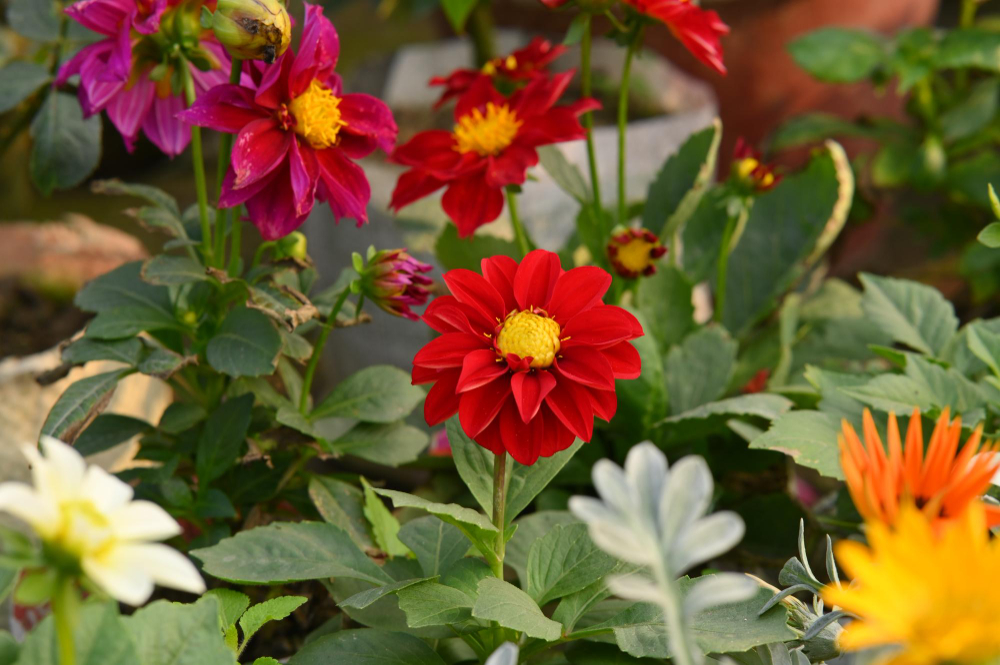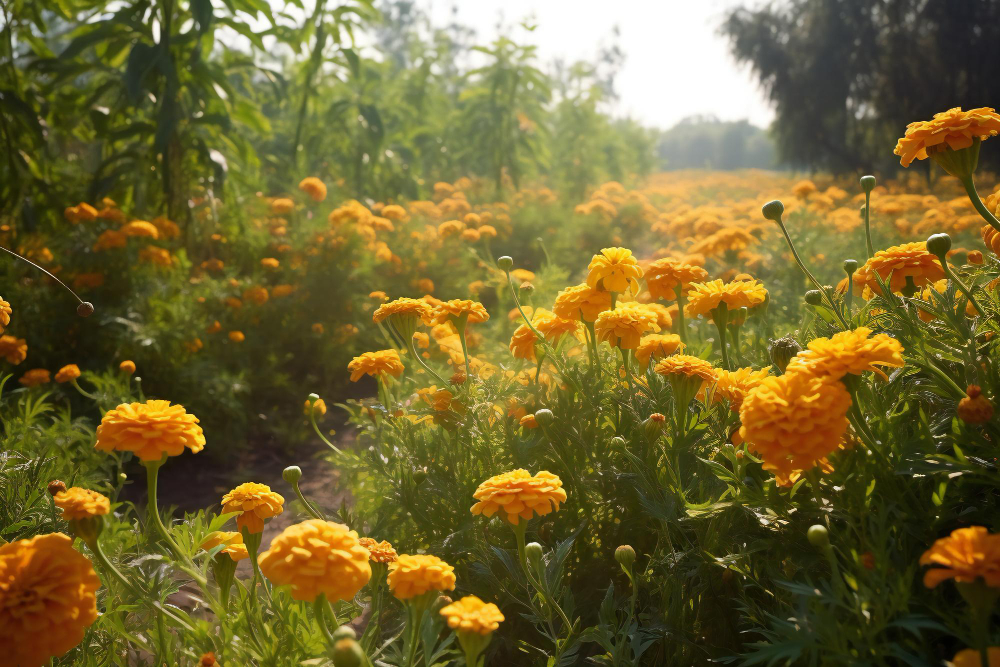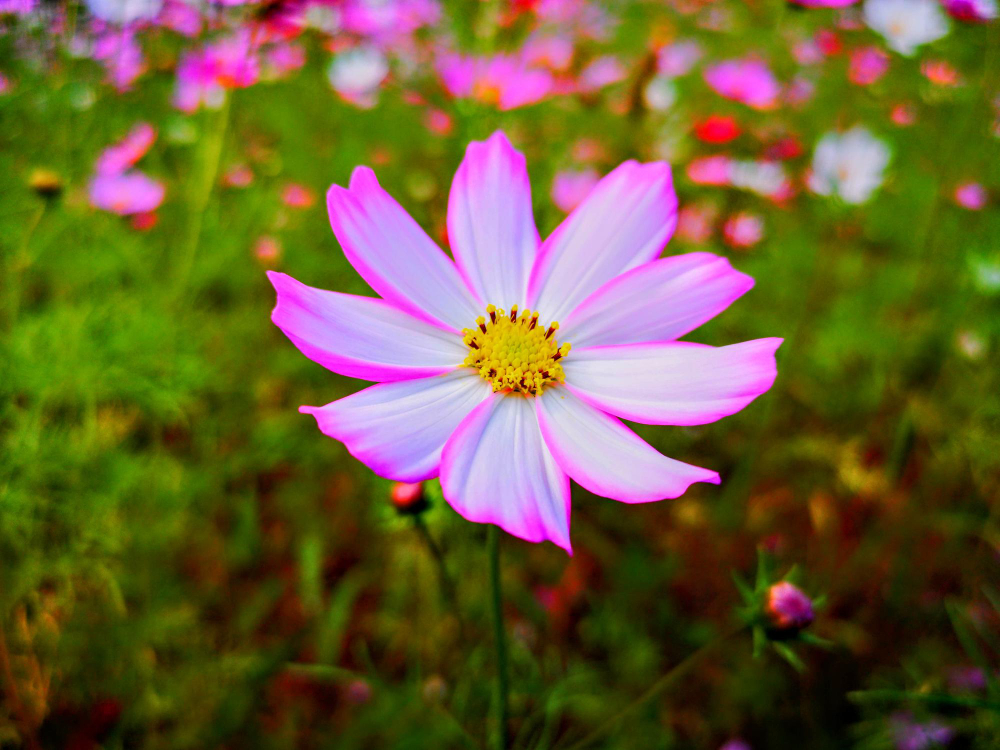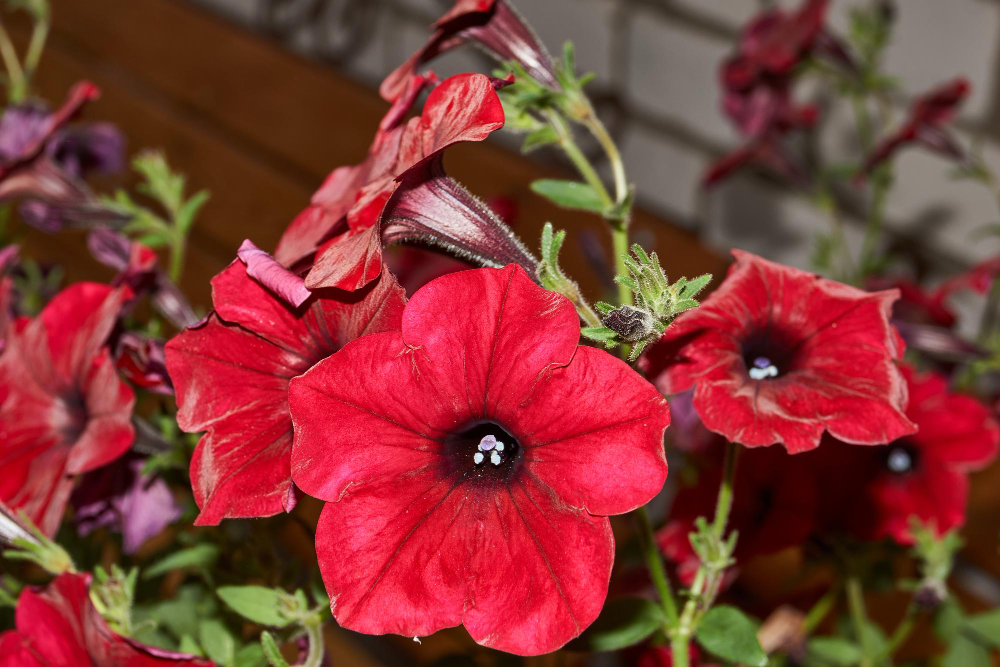Importance of sowing flowers for summer blooms
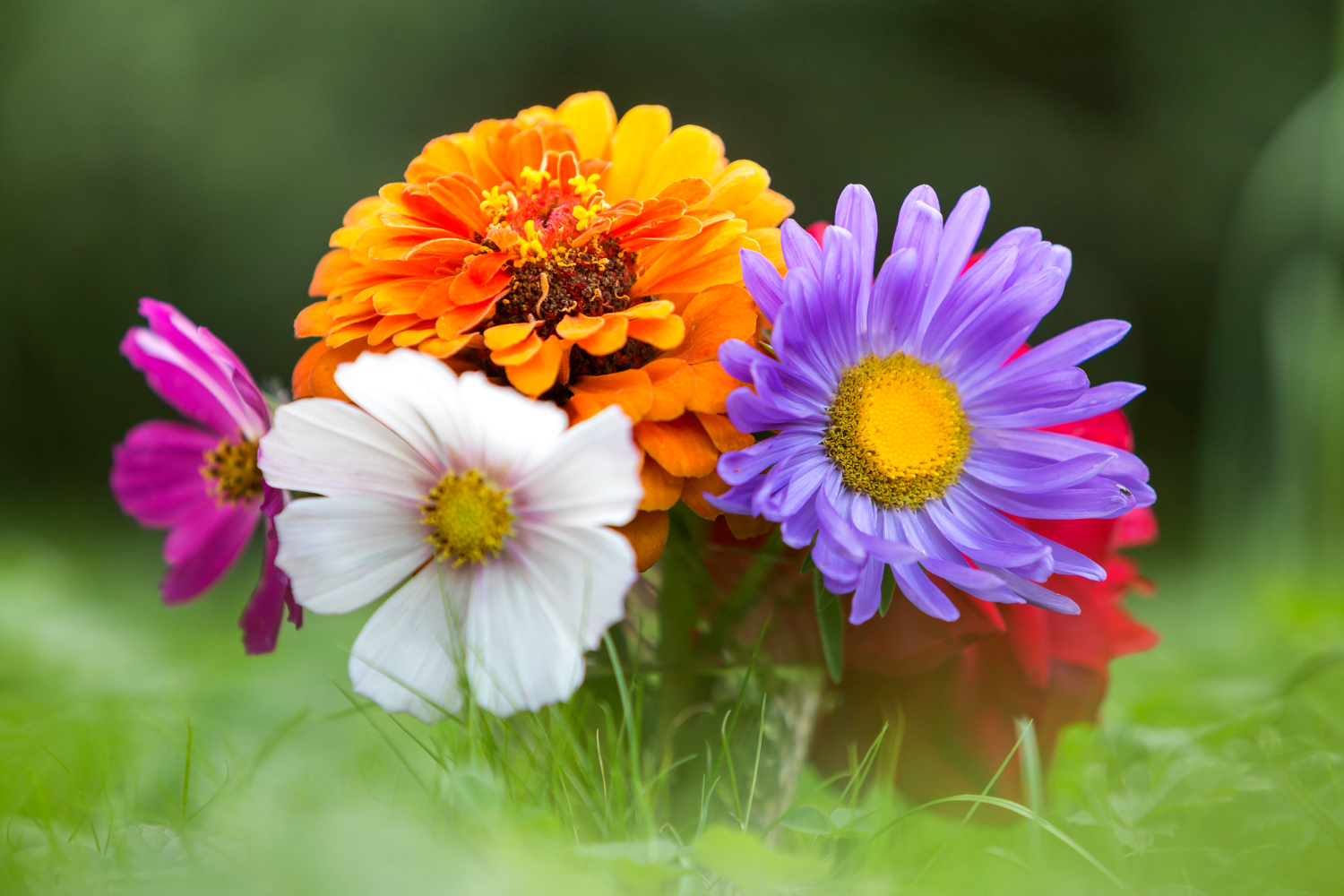
Sowing flowers ahead of summer offers numerous benefits:
- Colorful Beauty: Early planting yields vibrant blooms, enhancing the landscape with hues of roses, sunflowers, and marigolds.
- Pollinator Support: Flowering plants attract essential pollinators like bees, butterflies, and hummingbirds, fostering biodiversity.
- Mood Enhancement: Blooms contribute to mental well-being, reducing stress and promoting tranquility with their vivid colors and pleasant scents.
- Engagement and Learning: Flower sowing engages individuals, especially children, in gardening, fostering responsibility and connection to nature.
- Extended Blooming: Varied flower species with different blooming periods ensure a prolonged display of beauty throughout the summer.
Benefits of Planning and Early Sowing
Planning and early sowing offer numerous benefits for your garden. Starting early extends the flowering season and optimizes resource use. It broadens flower variety, accelerates bloom enjoyment, and fosters healthier plants with stronger roots. Early sowing enhances gardening success by reducing competition, attracting more pollinators, and affording greater garden design control. Ultimately, it brings satisfaction and joy as your garden flourishes with beautiful blooms all summer.
Factors to consider when choosing flowers for summer blooms
When selecting flowers for summer blooms, several factors should be taken into consideration to ensure their success. The following factors, such as climate, soil type, and sun exposure, play a crucial role in determining which flowers will thrive in your garden:
- Climate
- Soil type
- Sun exposure
- Watering needs
- Pest and disease resistance
Importance of choosing varieties that thrive in summer conditions
Let's learn about 10 flowers that bring joy in the summer!
Zinnia
Zinnias, scientifically known as Zinnia elegans, is native to Mexico and Central America. These annual flowers are known for their beautiful round blooms and long flowering season, making them a favorite choice for summer gardens. They are easy to grow, low-maintenance, and attract butterflies and bees, thereby adding life and color to any outdoor space.
Steps to Sow Zinnia
- Select a sunny, well-drained spot. Prepare soil.
- Plant zinnia seeds directly or indoors.
- Transplant or thin seedlings at 2 inches tall.
- Keep soil moist, and fertilize biweekly.
- Deadhead spent flowers, pinch for business.
Ideal Growing Conditions
Zinnias thrive in warm climates and require full sun to flourish. They prefer well-draining soil with a pH range of 5.5 to 7.5. These flowers can be grown in various types of soil, but they perform best in fertile soil that has been amended with organic matter. Zinnias are relatively drought-tolerant once established, but consistent watering is crucial for optimal growth and blooming.
Care Tips
Marigold
Marigolds, scientifically known as Tagetes, belong to the daisy family and are native to the Americas. They come in various colors, including shades of yellow, orange, red, and maroon. Marigolds are widely cultivated for their ornamental value, but they also have medicinal properties and are used in traditional remedies.
Steps to sow Marigold
- Choose a sunny location and loosen the soil.
- Amend soil with compost for marigolds.
- Scatter seeds thinly and cover lightly.
- Water gently to keep the soil moist.
- Thin seedlings once they grow.
- Transplant if started indoors.
Ideal growing conditions
Marigolds prefer warm and sunny climates. Here are the ideal conditions for their optimal growth:
- Sunlight: Marigolds thrive in full sun, receiving at least 6-8 hours of direct sunlight per day.
- Temperature: They prefer temperatures between 70-80°F (21-27°C) during the day and slightly lower temperatures at night.
- Soil: Well-draining soil is essential for marigolds. They can tolerate various soil types but prefer loamy or sandy soil that is rich in organic matter.
Care tips
- To ensure healthy and abundant marigold blooms, consider these care tips:
- Water marigolds regularly, especially in dry spells, but avoid overwatering to prevent root rot.
- Feed with a balanced fertilizer every 4-6 weeks for healthy growth and abundant blooms.
- Deadhead spent flowers to encourage continuous blooming and prevent seed production.
- Monitor for pests like aphids or spider mites; use organic pest control methods.
- Mulch around plants to retain moisture, suppress weeds, and regulate soil temperature.
Cosmos
Cosmos is an elegant and vibrant flower that blooms in various colors, including white, pink, red, and orange. Its delicate petals and feathery foliage add a touch of beauty to any garden or landscape. Cosmos plants can grow up to 3-6 feet tall, making them a perfect choice for adding height to flowerbeds or borders.
Steps to Sow Cosmos
To sow Cosmos, follow these simple steps:
- Timing: Sow Cosmos indoors 4-6 weeks before the last frost; plant Zinnia seeds outside after frost risk.
- Soil Prep: Enrich soil, and clear weeds from the planting area.
- Sowing: Lightly press Cosmos seeds into the soil; plant Zinnia seeds ¼ inch deep, space according to variety.
- Watering: Keep soil moist but not soaked with gentle watering.
- Sunlight: Ensure 6-8 hours of direct sun for Cosmos and Zinnia.
- Transplanting (if necessary): Move indoor-started Cosmos outside after frost danger, gradually exposing them to outdoor conditions.
Ideal Growing Conditions
For thriving Cosmos plants, prioritize optimal growing conditions. They require full sun exposure to produce abundant blooms. Ensure well-drained soil enriched with organic matter for both Cosmos and Zinnia, avoiding waterlogged or compacted soil. These warm-season flowers thrive in temperatures ranging between 60-80°F (15-27°C), fostering optimal growth and blooming potential.
Care Tips
Care for your Cosmos plants with these tips:
- Water regularly: Keep soil evenly moist, especially during dry spells. Water at the base to avoid foliage wetness and fungal diseases.
- Mulch: Apply organic mulch to retain moisture, suppress weeds, and regulate soil temperature.
- Deadhead spent blooms: Remove faded flowers to encourage continuous blooming.
- Support tall varieties: Stake taller Cosmos or Zinnia to prevent flopping.
- Fertilize sparingly: Use balanced, water-soluble fertilizer during the growing season, avoiding excess nitrogen for more blooms.
Sunflowers
Sunflowers are vibrant and cheerful flowers that symbolize happiness and positivity. They come in various sizes and colors, ranging from small dwarf varieties to tall giants. Sunflowers attract pollinators like bees and butterflies, making them a great addition to any garden.
Steps to Sow Sunflowers:
- Choose a Sunny Spot: Select a sunny area with well-drained soil.
- Plant the Seeds: Sow sunflower seeds 1-2 inches deep, spacing them 6-12 inches apart.
- Water Regularly: Keep the soil consistently moist but not waterlogged during germination.
- Thin Seedlings (if needed): Remove excess seedlings to provide proper spacing.
- Support (if required): Stake taller varieties to prevent toppling in strong winds.
Ideal Growing Conditions:
- Sunflowers thrive in full sun, so choose a location where they can receive at least 6 to 8 hours of direct sunlight each day.
- They prefer well-draining soil that is rich in organic matter.
- It is essential to provide support for taller varieties to prevent them from toppling over due to their heavy heads.
- Regular watering is crucial during dry periods, but avoid overwatering as it can lead to root rot.
Care Tips:
Remove weeds for nutrient competition. Fertilize as directed during the season. Support tall varieties with stakes. Monitor for pests and manage accordingly. Deadhead spent flowers for continuous blooming. Ensure adequate watering to keep the soil moist.
Morning Glory
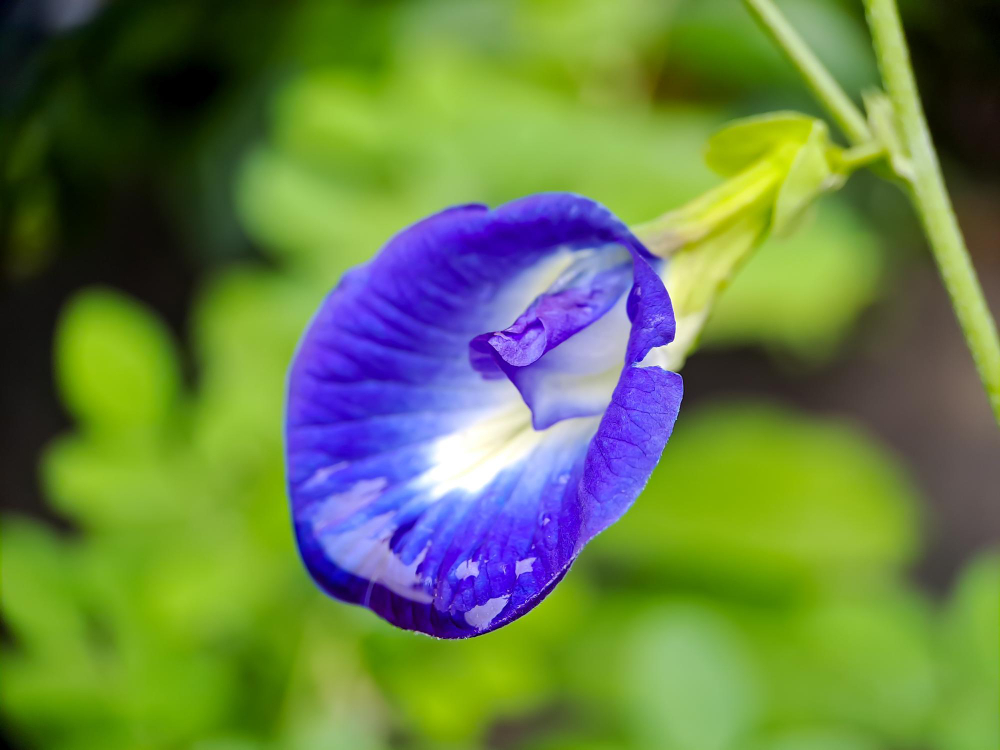
Morning Glory is a popular flowering vine that produces stunning trumpet-shaped flowers in a variety of vibrant colors. This plant is known for its fast growth and ability to cover fences, trellises, or any vertical structure.
Steps to Morning Glory
If you’re interested in growing Morning Glory from seeds, here are the steps you can follow:
- Choose a sunny spot: Morning Glory needs full sun, so pick a spot with 6 hours of sunlight.
- Prepare soil: Loosen and clear soil of weeds and debris for good drainage.
- Sow seeds: Scatter seeds, lightly press them into the soil, consider soaking them overnight for better germination.
- Water gently: Moisturize soil after planting, avoiding overwatering to prevent root rot.
- Provide support: Use a trellis for climbing as Morning Glory grows.
- Germination: Seeds typically sprout within 7-14 days; thin seedlings for proper spacing.
Ideal Growing Conditions
Morning Glory thrives in warm climates and is often cultivated as an annual plant. It flourishes best in temperatures ranging from 60-85°F (15-29°C). The ideal soil for Morning Glory is well-draining, with a pH level between 6.0-7.5. Full sun exposure is essential for its optimal growth and abundant flowering. These conditions ensure that Morning Glory thrives and displays its vibrant blooms to their fullest potential.
Care Tips
To ensure your Morning Glory plants thrive and produce beautiful blooms, here are some care tips to keep in mind:
- Watering: Keep Morning Glory plants evenly moist, especially in dry periods, but avoid overwatering.
- Fertilization: Apply balanced, water-soluble fertilizer every 4-6 weeks for healthy growth and flowering.
- Pruning: Regularly trim excessive growth to prevent invasiveness and maintain desired shape.
- Pest control: Monitor for pests like aphids and spider mites; use organic or chemical pesticides as needed.
Coneflower
Coneflower, also known as Echinacea, is a popular perennial flower that is loved for its vibrant colors and ability to attract pollinators. Native to North America, coneflowers are easy to grow and can be a delightful addition to any garden or landscape.
Steps to Sow Coneflower
- Soil Preparation: Choose sunny, well-drained soil. Loosen and clear debris.
- Sowing Seeds: Plant Zinnia seeds directly into soil, following spacing instructions.
- Watering: Keep soil moist during germination (7-14 days), reducing frequency afterward.
- Thinning: Once seedlings reach a few inches tall, thin them as directed.
- Care: Support taller varieties with stakes or cages. Deadhead flowers regularly to encourage continuous blooming and prevent seed production.
Ideal Growing Conditions
Coneflowers thrive in full sun, preferably receiving at least 6 hours of direct sunlight per day. They are tolerant of a wide range of soil types but prefer moist, well-drained soil. It’s vital to ensure proper air circulation around the plants to prevent diseases, so avoid overcrowding.
Care Tips
Maintain coneflowers for healthy growth and blooms: Water deeply weekly during dry spells. Apply balanced fertilizer early on. Mulch to conserve moisture and suppress weeds. Deadhead spent flowers regularly. Divide overcrowded plants every 2-3 years to sustain vigor.
Alyssum
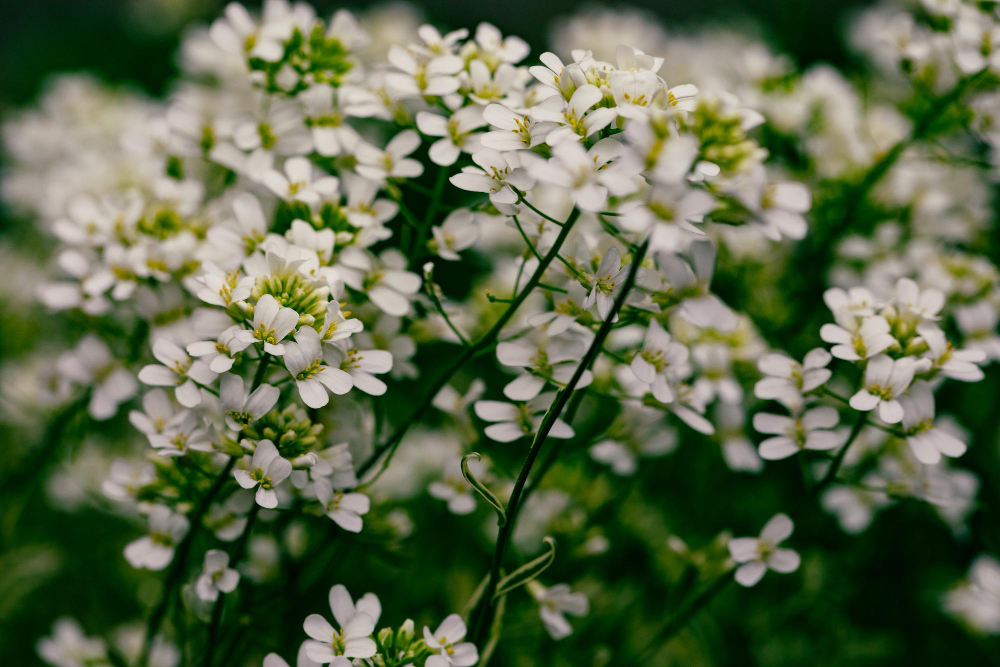
Alyssum, also known as Lobularia maritima, is a low-growing flowering plant that belongs to the Brassicaceae family. It is native to the Mediterranean region and is loved for its sweet fragrance and delicate flowers. Alyssum blooms profusely throughout the summer, attracting bees, butterflies, and other pollinators to the garden.
Steps to Sow Alyssum
- Choose a sunny location: Alyssum thrives in full sun, at least 6-8 hours of direct sunlight per day.
- Prepare the soil: Alyssum prefers well-draining soil. Remove any weeds and loosen the soil before planting.
- Sow the seeds: Scatter the seeds evenly over the prepared soil. No need to cover the seeds with soil, as they require light to germinate.
- Water gently: Water the seeds gently using a fine mist or a watering can. Keep the soil moist until the seeds germinate.
- Thin the seedlings: Once the seedlings have grown a few inches tall, thin them to provide enough space for healthy growth. Space them around 6-8 inches apart.
Ideal Growing Conditions
- Sunlight: Full sun is preferable, but Alyssum can tolerate afternoon shade in hot climates.
- Soil: Well-draining soil is crucial for Alyssum. It thrives in moderately fertile, loamy soil.
- Watering: Alyssum prefers moderate watering. Allow the soil to dry slightly between waterings to prevent waterlogged conditions.
- Temperature: Alyssum prefers cool to mild temperatures, around 60-75°F (15-24°C). It can tolerate light frosts but may wither in extreme heat.
- Fertilizer: Alyssum is a low-maintenance plant that doesn’t require much fertilizer. A balanced, slow-release fertilizer can be applied once a month during the growing season.
Care Tips for Alyssum
- Deadheading: Pinch off faded flowers regularly to stimulate more blooms.
- Mulching: Apply organic mulch around Alyssum for moisture retention, weed suppression, and soil temperature regulation.
- Pests and Diseases: Watch for aphids, slugs, and snails; use organic pest control methods if needed.
- Pruning: Trim leggy Alyssum for bushier growth and neat appearance.
- Overwintering: In warmer areas, Alyssum may persist year-round; in colder regions, it's an annual needing reseeding yearly.
Petunias
Petunias are popular flowering plants that add a touch of color and vibrancy to any garden or landscape. Known for their trumpet-shaped blossoms, petunias come in a wide range of colors, from soft pastels to bold and vibrant hues.
Steps to sow Petunias:
- Choose a sunny location: Select a spot with full sun.
- Prepare soil: Ensure well-drained soil, free of debris.
- Sow seeds: Plant petunia seeds directly into the soil, lightly covering them.
- Water gently: Keep soil moist but not waterlogged.
- Provide warmth: Maintain temperatures around 70-75°F for optimal germination.
Ideal growing condition
Petunias thrive in full sunlight with well-draining, slightly acidic soil. Keep them consistently moist, fertilize regularly, and ensure good air circulation to enjoy vibrant blooms all season.
Care tips
- Keep soil consistently moist; avoid waterlogging.
- Fertilize regularly for healthy growth and flowering.
- Deadhead spent blooms to encourage continuous flowering.
- Monitor for pests and diseases; treat promptly if detected.
- Prune leggy growth to maintain bushiness.
- Enjoy vibrant blooms throughout the growing season with proper care.
Geranium
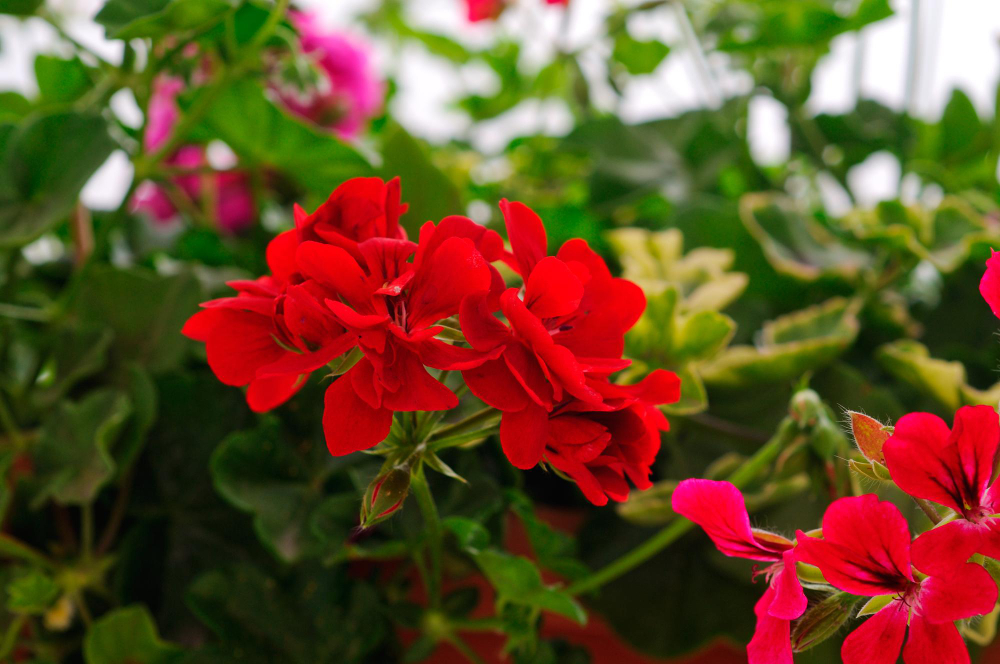
Geraniums, also known as Pelargoniums, are herbaceous perennials that belong to the Geraniaceae family. Although they are native to South Africa, they have become widely cultivated across the globe for their beauty and versatility. Available in various hues, including red, pink, white, and purple, geraniums attract pollinators like bees and butterflies, adding life to your garden.
Steps to Sow Geraniums
- Start geraniums from seeds or cuttings indoors 8-10 weeks before the last frost or buy from a nursery.
- Fill seed trays with well-draining potting mix and press seeds lightly onto the soil.
- Keep soil moist but not waterlogged until germination, typically 7-14 days.
- Transplant seedlings with two sets of true leaves into pots or the garden, spacing them 8-12 inches apart.
Ideal Growing Conditions
Geraniums thrive in full sun to partial shade conditions, ideally receiving 6 to 8 hours of direct sunlight each day. They prefer well-draining soil with a slightly acidic to neutral pH range (6.0-7.0). Regular watering is important, but overwatering should be avoided to prevent root rot.
Care Tips
- Water geraniums regularly, avoiding waterlogging.
- Deadhead spent flowers for continuous blooming.
- Fertilize every 4 to 6 weeks with balanced, water-soluble fertilizer.
- In cold regions, treat geraniums as annuals or overwinter indoors.
- Watch for aphids, spider mites, and whiteflies; treat them promptly.
- Trim leggy growth for compactness.
Ageratum
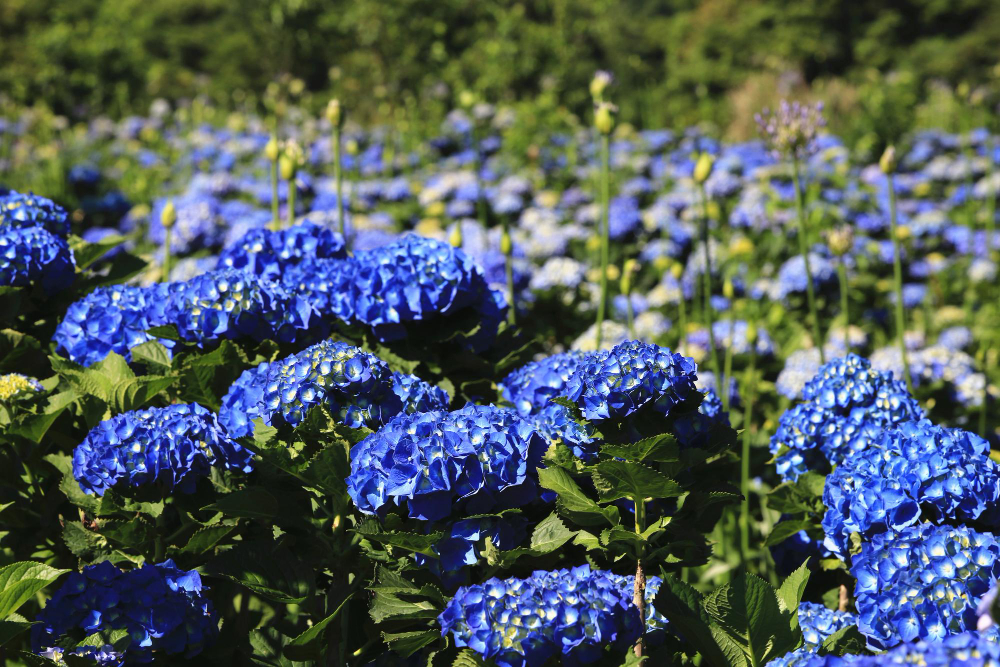
Ageratum, also known as Flossflower, belongs to the Asteraceae family. It is native to Central America but is now widely cultivated across the globe for its attractive flowers and easy cultivation. The plants feature clusters of small daisy-like flowers that create a soft, fluffy appearance.
Steps to Sow Ageratum
- Choose a well-draining soil mix for Ageratum seeds. Fill trays or pots with it.
- Lightly press Ageratum seeds onto the soil surface, avoiding deep burial.
- Keep soil moist but not waterlogged.
- Place trays or pots in warm, indirectly lit areas or under grow lights.
- Germination typically occurs within 7-14 days. Transplant seedlings with a few leaves to the garden.
Ideal Growing Conditions
- Sunlight: Ageratum thrives in 4-6 hours of sunlight daily.
- Soil: Well-draining, slightly acidic soil with pH 6.0-6.5 is best.
- Temperature: Ideal in warm climates of 70-85°F (21-29°C), protect from frost.
- Watering: Keep soil consistently moist, avoiding saturation and overhead watering.
- Fertilization: Apply balanced, water-soluble fertilizer monthly for healthy growth and blooming.
Care Tips
To ensure your Ageratum plants thrive and produce abundant blooms, consider the following care tips:
- Deadhead spent flowers regularly to encourage continuous blooming.
- Mulch around the plants to conserve moisture and suppress weed growth.
- Monitor for common pests such as aphids or spider mites. Treat them promptly with organic insecticides if necessary.
- Ageratum benefits from occasional pruning to maintain its shape and prevent legginess.
- Protect the plants from strong winds, as they can damage the delicate blooms or break the stems.
Conclusion
So, don’t hesitate to start your gardening journey today. Begin by researching and selecting the flowers that appeal to you the most. Purchase quality seeds or young plants from reputable sources, ensuring their viability and health. Follow proper planting techniques and provide the necessary care and maintenance for your plants to thrive.
So, embrace the opportunity to create your very own summer paradise. Start planning, start sowing, and behold the magic that unfolds as your garden blooms into a symphony of colors and fragrances.

